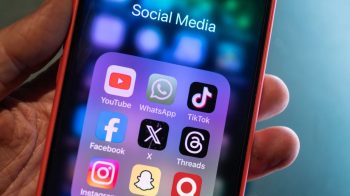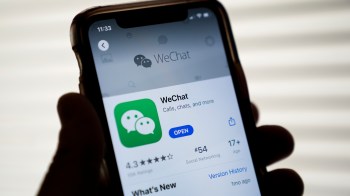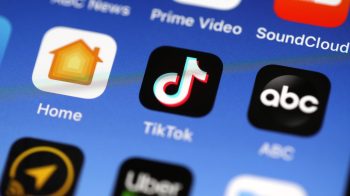
A look at India’s TikTok ban four years on
Share Now on:
A look at India’s TikTok ban four years on

This story was produced by our colleagues at the BBC.
Earlier this year, President Joe Biden signed a bill that would lead to TikTok being banned unless its Chinese parent company, ByteDance, sells by January 2025. If the ban goes ahead though, the U.S. wouldn’t be the first country to ban TikTok.
In early 2020, India was TikTok’s largest foreign market, with 200 million users. It had quickly become a hit with people like Sumit Jain, in the western Indian state of Maharashtra.
Working in his clothes shop in a small town, Jain said his friends had suggested they could use TikTok to display their dancing and acting talent. It led to a career as a content creator, with 4 million followers on the platform.
TikTok’s combination of video and music, as well as its ease of use, helped its rapid growth in India, said Matali Nikore, founder and chief economist at Nikore Associates, a youth-led think tank in New Dehli.
“The algorithms on TikTok just makes things much easier to find, and they don’t necessarily favor only the established users, but also new users,” she said.
“And I think the ability to add songs, etc., in a country like India, that makes a lot of difference because then you can have Bollywood related content, which people can prepare on their own.”
But tensions were growing between India and China, resulting in clashes on the border. The situation led Prime Minister Narendra Modi’s government to raise concerns about Chinese-owned apps that held large amounts of data about their users — like TikTok.
Then, on June 29, 2020, the government made an announcement: TikTok, alongside 58 other Chinese-owned apps, would be banned nationally.
“I felt devastated. And I felt as if everything that I’ve worked for, now I have nothing to show,” Shivani Kapila said.
Kapila is a content creator also known as Little Glove. She’d quit a job with Google to focus on TikTok, where she pulled in 10 million followers by posting comedy shorts, often with her mother-in-law.
“I was practicing for another TikTok to be posted,” she said, of the day the announcement came. “At 4 p.m., it showed that the account said that the platform is not available, try again. That notification is still there in front of my eyes.”
With the ban, Kapila initially thought she would have to go back to a 9-5 job. “I did not think of doing Instagram or YouTube that time, I was only on TikTok.”
But according to economist Nikore, once TikTok was gone, users quickly found other platforms.
“There are some homegrown platforms like Share Chat. Share Chat has almost 80 million users; it does have a good market share,” she said. “YouTube Shorts, it got a huge boost in popularity. YouTube is an easy to use application. Its International and YouTube Shorts pretty much has the same features as TikTok.”
It’s difficult to quantify the economic impact of banning TikTok and the other 58 Chinese-owned apps, Nikore said. And it’s not necessarily India-based apps that have been the biggest winners from the change.
“When TikTok was present, it’s not as though those same users were not present on Instagram or YouTube,” Nikore said. “They were still there, they were just there on different, multiple platforms. I think a lot of that space has been taken by American companies, not so much by Indian homegrown companies.”
For Kapali, switching platforms was at first daunting, but it has allowed her to diversify her content and regain her follower base.
“With Instagram, we have a dedicated parenting profile,” she explained. “With YouTube, I show my lifestyle, which is, again, a different style of content creation. And I also produce a podcast, longer format of shorts.”
She added: “Little Glove was born on TikTok, and I can never forget it, but now I thoroughly enjoy YouTube and Instagram.”
According to Nikore, it’s not impossible that TikTok and other apps could return to India, if they addressed the government’s concerns. But four years after the ban, the question is whether the users would return to them.
There’s a lot happening in the world. Through it all, Marketplace is here for you.
You rely on Marketplace to break down the world’s events and tell you how it affects you in a fact-based, approachable way. We rely on your financial support to keep making that possible.
Your donation today powers the independent journalism that you rely on. For just $5/month, you can help sustain Marketplace so we can keep reporting on the things that matter to you.

















